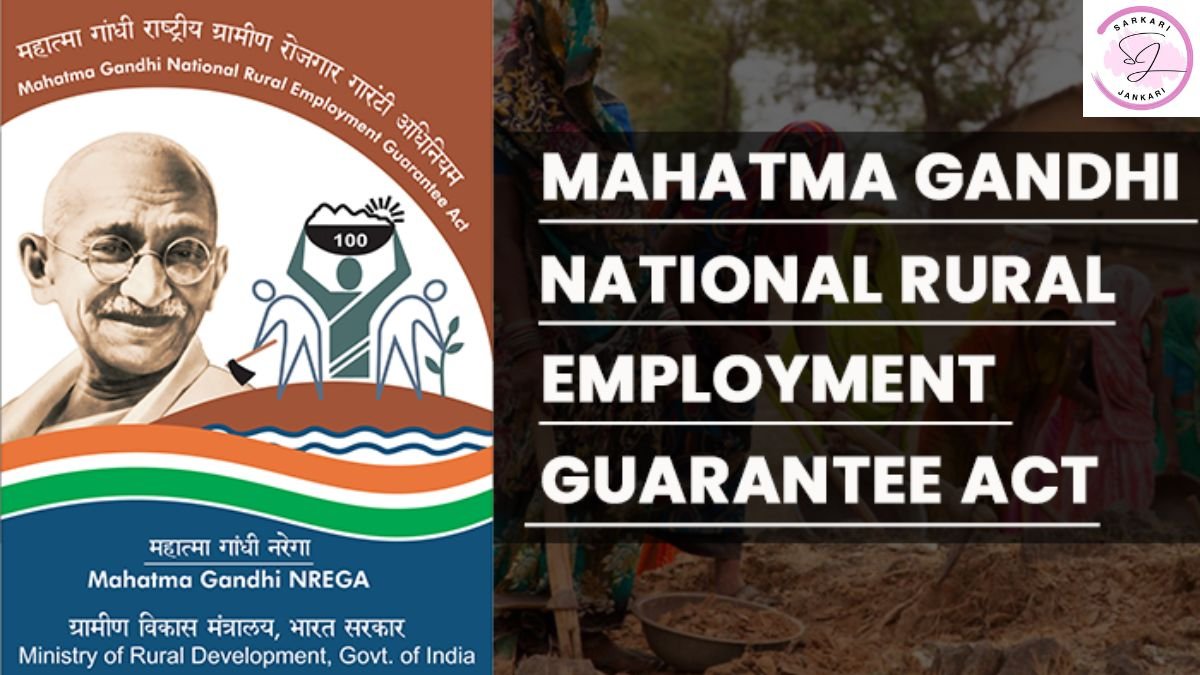The Mahatma Gandhi National Rural Employment Guarantee Act (MGNREGA), popularly known as MGNREGA Yojana, is one of the most transformative social welfare schemes launched by the Government of India. Aimed at enhancing livelihood security in rural areas, this scheme guarantees 100 days of wage employment per year to every rural household whose adult members volunteer to do unskilled manual work. Since its inception in 2005, MGNREGA has played a pivotal role in reducing poverty, empowering marginalized communities, and strengthening rural infrastructure. In this article, we will explore the key features, benefits, challenges, and impact of MGNREGA Yojana, along with its significance in India’s rural development.
What is MGNREGA Yojana?
MGNREGA Yojana is a significant scheme of the Indian government that seeks to provide job guarantees to rural families. It began in 2005 and commenced in 2006, with the primary objective of enabling rural people to spend more, particularly the poor. The scheme mandates that at least one-third of the beneficiaries should be women, ensuring equity in job opportunities.
The scheme is run by the Ministry of Rural Development with the firm conviction that all people have a right to work. It creates jobs of all kinds–including Sarkari jobs in India – and it also constructs useful things like roads, ponds canals, or anything else that will help rural areas to develop in a healthy way over time. This initiative, by offering stable and meaningful work, not only plays a vital role in empowering individuals. It also strengthens rural communities across
Key Features of the MGNREGA Yojana
Employment Guarantee: 100 days of paid work is assured to each rural family in a financial year. If the government fails to provide this work, it has to compensate in the form of unemployment allowances.
Decentralized Planning: Planning is accorded a lot of importance at the grassroots level, and Gram Panchayats are put at the center of the identification and implementation of various projects.
Focus on Women Empowerment: One-third of the workers employed under MGNREGA have to be women, thereby encouraging their active participation in the rural economy.
Payment of Wages: Wages are standardized under the Minimum Wages Act, and payment is made through bank accounts or post offices to ensure transparency.
Development of Assets: The scheme tries to create permanent assets, such as water harvesting structures, irrigation facilities, and projects that improve rural connectivity.
Social Inclusion: MGNREGA encourages the inclusion of Scheduled Castes (SCs), Scheduled Tribes (STs), and other backward classes.
Advantages of MGNREGA Yojana
Poverty Alleviation: It has made a tremendous impact in poverty levels within rural India with guaranteed employment. It serves as a safety net for families when the agricultural seasons are off.
Rural Development: This scheme has resulted in durable assets which enhanced the quality of life within the rural areas. For example, the production projects on water conservation enhanced the production in agriculture.
Empowerment of Women: MGNREGA, with a high emphasis on women workers, has empowered rural women by giving them financial independence and decision-making powers.
Reduced Migration: This scheme has reduced the migration of rural populations to urban areas for work as it employs in the local areas.
Environmental Sustainability: Many projects under the MGNREGA Scheme 2025 focus on environmental conservation, such as afforestation, drought-proofing, and flood control.
Challenges Faced by MGNREGA Yojana
Despite the wide range of advantages, MGNREGA Yojana is facing several challenges that are working against its smooth functioning:
- Late Wage Payments: The most frequent complaint is delayed wage payments that affect the worker’s financial security.
- Corruption and Leakages: There are instances of corruption, such as fake job cards and misappropriation of funds, in certain areas.
- Lack of Awareness: Most rural households are not aware of their rights under the scheme, and the benefits are therefore underutilized.
- Limited Working Days: A guarantee of 100 working days is not adequate for a family to meet their annual financial needs.
- Quality of Assets: Even though the scheme is focused on asset creation, the quality and durability of such assets are often questionable.

Impact of MGNREGA Yojana on Rural India
Since its introduction, MGNREGA Yojana has impacted rural India in many ways:
- Economic Empowerment: Billions of rupees have been infused into the rural economy by this scheme, uplifting local markets and improving the quality of living.
- Social Upliftment: MGNREGA has brought about social inequalities by giving prominence to underprivileged communities.
- Infrastructure Development: The rural infrastructure created has enhanced connectivity, irrigation, and water availability, benefiting farmers and rural households.
- Climate Resilience: Watershed management and afforestation projects have made rural areas more resilient to climate change.
- Gender Equality: Women’s participation in the workforce has challenged traditional gender roles and promoted gender equality.
How to Take Benefits Under MGNREGA Yojana
To avail of the various benefits of the MGNREGA Yojana, rural households must take the following procedure:
- Registration: Apply for a job card at the local Gram Panchayat by submitting relevant documents such as proof of identity and residence.
- Job Card Issuance: Upon verification, a job card is issued that contains details about family members eligible for work.
- Demand for Work: Apply for work in writing or orally at the Gram Panchayat or Block Office.
- Allocation of Work: The work is allocated within 15 days of applying, within a 5-kilometer radius of the village.
- Payment of Wages: Wages are paid within 15 days of completion of work directly into the beneficiary’s bank account.
Future of MGNREGA Yojana
The success of MGNREGA Yojana has made it a cornerstone of India’s rural development strategy. However, there is scope for improvement:
Increasing Workdays: Extending the guarantee of workdays beyond 100 could provide greater financial security to rural households.
Enhancing Transparency: Leveraging technology to ensure timely wage payments and reduce corruption.
Skill Development: Integrating skill development programs to enhance the employability of workers.
Focus on Quality: Assets created to last long and of better quality in support of long-term development.

